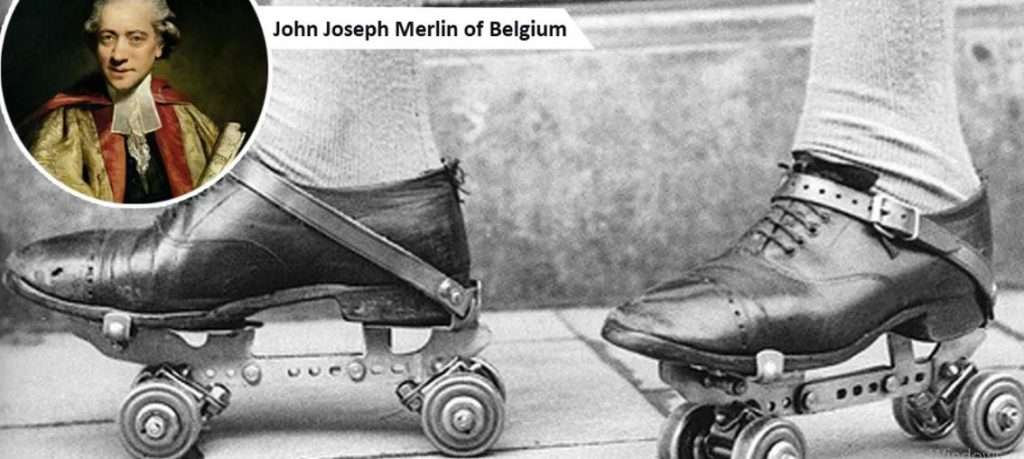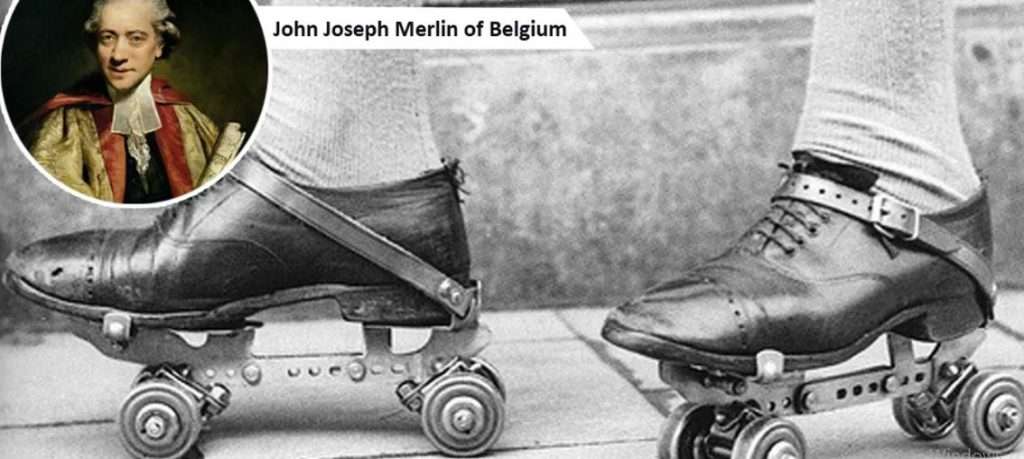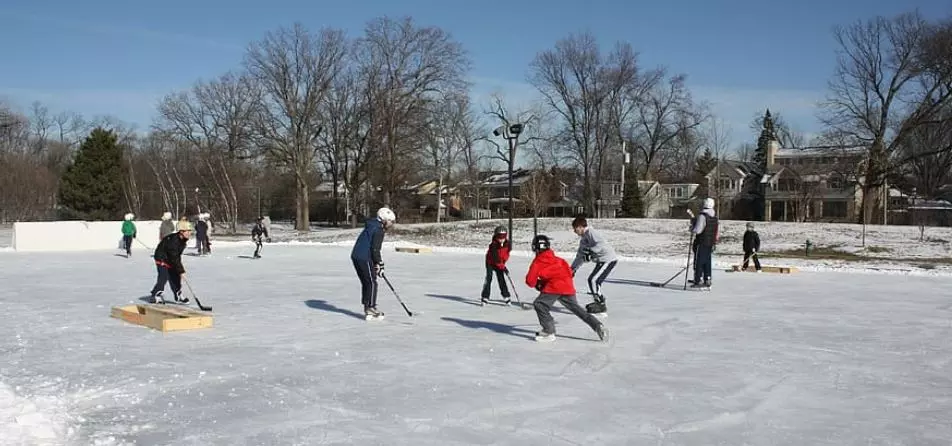If you are reading this post, it simply means you want know what the first roller skate look like.
Having existed since the 18th century, roller skating is an act of moving on flat or smooth surfaces using roller skates.
Although it is a recreational activity carried out on roller rinks or skating parks. Perchance, you could skate on streets, bike paths, or sidewalks. However, roller skating includes speed, inline, roller hockey, figure, and quad skating.
In the same vein, the earliest roller skaters used skates in theaters and musical performances to also enhance and stimulate the act of ice skating on stage during the 18th century.
These early skaters performed roller skating in a straight line since turning was very complex with the primitive skates at that time. Hence, because of the infrequent performance at that period, roller skating wouldn’t see the prevalent use of skates until the late 1800s.
So far, this article will bring to lamplight the following vital contents such as; who invented roller skates, when roller skating became popular, roller skates history timeline, where roller skates were invented, what did the first pair of roller skates look like, and more to enhance your understanding on the history of roller skating.
Without much ado, let’s get started!
The Roller-Skating Black History?
With the rise and popularity of roller skating, it is crucial to identify and recall the racist history in it.
However, if you reflect on the era when Black roller skate rinks were a widespread pastime in the 1960s during the Civil Rights Movement, roller skating for Black people became a free event for them despite the high level of racism.
Not regarding the hardship and social discrimination, the Black people created a symbol to break loose of the blockades that existed not only in the skating rinks and parks but throughout American history and the world at large.
Similarly, back in the 1950s, skating rinks and parks offered the Black Community only one night a week.

Though this night was called the “Black Night,” which was later changed to different code names like; the “Martin Luther King Night” andthe “Soul Night” during the Civil Right Movementand since there was a high level of racism and segregation towards the Black people even in the clothing, and music policies of the Black people.
The history of Black roller skating?
Commenced development in Central Park, New York, California, and Los Angeles. However, California was the first city to have sanctuaries for Black skating values.
As regards discrimination, Black people were not allowed to skate in indoor rinks and parks. Hence, skating on the streets of the listed cities became a way of expression and freedom.
On the other hand, Venice Beach was another place of refuge from segregation and racism as the Black people had it to be an epicenter for roller dancing. Perchance, roller skating, and roller dancing became a global phenomenon in California and Venice Beach from 1979 to date.
Notwithstanding, roller skating had a famous intersection as regards the Civil Right Movement, a man named Ledger Smith was heard all over the news in the Washington Post through a build-up leading to the famous speech “I Have a dream” by Martin Luther King Jr. Smith did skate for about 685 miles to attend this epoch moment in the history of the Black community.
In essence, the statement of Martin Luther King Jr. had a spirit lift to the strength and power of Black people in their pursuit of Civil Rights.
After the pandemic, the resurgence of roller skating came into play in America as many roller skaters understood the historical link with the Black community, particularly during the Civil Right Movement. Notwithstanding, Black Lives Matter re-claimed momentum in the summer of 2020.
So far, Tik Tok videos created by Ana Coto where she was roller skating as she shared inspirational facts about the Black history of roller skating and the essence of being able to reignite the tremendous culture and history behind roller skating, and necessary to understand why it is the bridge for the Black community to find freedom and security in this contemporary time.
Who Invented Roller Skates?
Getting this straight, John Joseph Merlin invented roller skates in 1760. The Belgian presented his wheeled shoes as he attended a party in London, where he crashed into a walled mirror. Similarly, advancement to John Joseph Merlin’s invention became known in 1819 by Monsieur Petitbled, who patented a roller skate with three wheels.
Perchance, his skates were inline and had no way to turn compared to his predecessor. Not until an American, James Leonard Plimpton, reinvented the previous wheels to a patented 4-wheeled roller skate that allowed skaters to pivot as possible.
When Did Roller Skating Became Popular?
Let’s begin this with a little intro!
Although during the Golden Age of roller skating, that is, between 1937 to 1959, people needed relief from World War II’s stress. Roller skating became an event for accessible and available pastime for children and adults alike.
During this period, different forms of roller skating emerged, such as; roller derby, speed skating, and skate dancing. However, this activity was integrated as a national competitive sport across America.
However, it wasn’t until the ‘70s and ‘80s that it became trendy as roller disco emerged. Hence, people would flock to most rinks and parks of roller skaters where pop music of that era would blast, and people of different cultures could dance and skate together.
Similarly, when hip-hop gained ground in the ‘80s, the rinks were venues for emergent artists and DJs. From then, music became an integrating factor in skating values, and since then and continued to determine how roller skating has become so popular until now.
Roller Skates History Timeline?
The historical timeline of roller skating will be explored in stages as detailed below;
The early 1700s
The use of roller skate came into existence in London by an unknown inventor.
1760 – Merlin’s Invention
John joseph Merlin invented the first recorded primitive inline skate designed with small metal wheels. Though he crashed his wheels at a party he attended in London.
1818 – The Roller Ballet.
Here, the roller skates appeared in Berlin on a ballet stage. The ballet called for ice skating, but it was challenging to produce ice on stage; hence roller skating became a substitute.
1819 – Patented Roller.
M. Petitbled designed the first patented skate in France. Though these early skates were also similar to inline skates. Perchance, these skates moved in straight lines and made the sweeping sideways turn but were complex to maneuver.
1823 – Rolito skates
Robert John Tyers of London made a patented skate known as Rolito, though it has five wheels in its row on the bottom side of the boot or shoe.
1863 – Four Wheeled Skate.
The four-wheeled roller skate or quad skate was integrated by James Leonard Plimpton in New York City to improve the previous inventions.
This four-wheeled skate had a set of 2 by two pairs of wheels (front and rear), which enabled pivoting actions as it used a rubber cushion and allowed maneuvers as you press your weight to one side or the other, most familiar to leaning on one side.
In 1866, Plimpton opened the first roller skating rink in New York City and alsport, Rhode Island.
1875 – Roller Skating Competition.
The first roller skating competition was held in Plymouth, England.
1876 – Brown’s Design.
William Brown’s design made his skate have two bearing surfaces of an axle, fixed with moving parts. However, Brown had a close partner called Joseph Henry Huges, who helped to design the patent for a ball or roller bearing race for carriage wheels and bicycles in 1877.
These men made the modern roller skates and skateboard wheels possible as they added all patent elements of necessary adjustable systems.
1902 – The Coliseum.
The Coliseum in Chicago opened a rink for roller skaters. Hence, more than 7,000 people were in attendance for the opening night.
1908 – Madison Square Gardens.
The Madison Square gardens in New York became a rink for skaters. However, hundreds of rinks were held across USA and Europe. So, the sports developed and became a bit popular with various versions such as indoor and outdoor skating, polo skating, competitive speed skating, and more.
The 1960s – Introduction Of Plastic
Technology regarding the advent of plastics also enhanced the production of new-age designs.
The ‘70s and ‘80s
The integration of music or the marriage of disco and roller skating gave room for more popularity, so many rinks were opened.
So, more than 4,000 roller discos were in existence as Hollywood began movie-making with the use of roller skating.
1979 – Redesigning Of Roller Skating.
These two players and brothers, Scot Olson and Brenna Olson, lived in Minneapolis, Minnesota found a four-wheeled inline skate that Plimpton made. However, they redesigned it by adding some elements from the inline skate.
Perchance used modern materials like polyurethane wheels as they attached them to the ice hockey boots and with a rubber toe brake.
1989 – Aeroblades And Macro Models.
After the sale of Rollerblade Inc by the Olson brothers to a new owner, Rollerblade Inc produced the Macro and Aeroblades models. These skates didn’t have long laces; instead, they had three buckles.
1990 to 1993 – Lighter Skates And Active Break Technology.
A glass-reinforced thermoplastic resin came into existence as it replaced polyurethane. The polyurethane replacement by Rollerblade Inc reduced the weight of the skates by 50 %. Similarly, Rollerblade Inc also developed Active Brake Technology (ABT), which increased roller skating safety.
2020 to 2022
Although roller skates were in short supply during the pandemic, skaters have begun to request roller skates after the tragic pandemic. Companies have also started production to meet their customers’ demands. So, get your skates as you go roller skating.
Where Were Roller Skates Invented?
The roller skates were invented in London by John Joseph Merlin. There he used a pair at a party in 1760. So far, roller skates appeared in Berlin on a ballet stage before the advancement in 1819 by M. Petitbled in France and subsequently in other places.
What Did The First Pair Of Roller Skates Look Like?
However? Science and technology have been driving tools for developing material, apparatus, or equipment in sports and other spheres of life.
Notwithstanding, the first skate by John Joseph Merlin had been described as a primitive inline skate with small metal wheels which had no brakes, and changing directions was almost impossible.
Before the invention of Merlin, there was what was called the first attempt at inline skating, which was made with wooden wheels and had no brakes. To steer it up to pick the skate from the surface, turn your foot in a particular direction, then lower the skate back to the floor or ground surface. Doing these processes is to enable you to have and maintain balance.
Conclusion
The history of roller skating cannot be over-emphasized, as it is dated back to the 1700s. So for skaters, you would be astonished that the earlier pair of roller skates were necessarily in-lined. However, it wasn’t until 1819 that the good-looking skates we use today came to be. Perchance, since Merlin’s first work on the skates, roller skating has thus reflected on the aspect of individuality and the relationship with others and collective experience.
Similarly, the Black history of roller skating has progressed positively, even today, since the aftermath of the Civil Right Movement in the Black community.
Contemporarily, perhaps roller skating could eventually serve as a physical metaphor for primarily forward motion. As such, it holds many medical benefits for adults and children alike.
Now you know the history of roller skating, go out there and have fun as segregation, discrimination, and racism are dropped to a very minimal level, unlike before. Do like and share this informative article with others!





